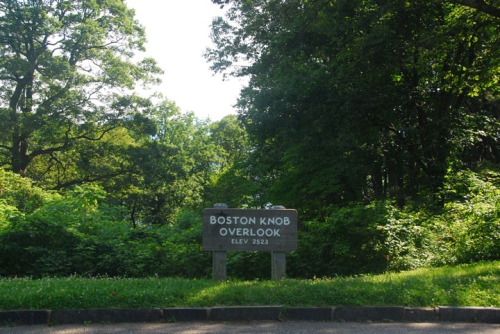I’m on a road trip this week. While Paco vacations at his favorite kennel, I’m driving up the Blue Ridge Parkway and the Skyline Drive, 574 miles of impossibly green and beautiful scenery.
No schedule; just cruising along, getting a truck driver’s tan. When I left Georgia, the weather was sunny, humid, and mid-90s; up here, it’s sunny, humid, and 65.
Next time, I think I’ll start at the north end and head south. That saves the best for last. The most spectacular views are down in the North Carolina mountains. As you drive north, the scenery becomes less dramatic and more pastoral.
I like pastoral, but spectacular is better. When I find some really high-end spectacular, I can almost hear a choir in the background.
Maybe it’s just me. Or my tinnitus.
In any case, by the time I reached the Skyline Drive, I was pretty jaded by fabulous scenery. Not that I stopped taking photos. When this trip is over, I will have 500-600 images to deal with.
The last time I made this drive was 15 years ago, a trip I remember fondly. This time, I was a bit fearful I would be disappointed. Repeating a thing years later often turns out to be a letdown.
Happily, that hasn’t been the case. The BRP is as beautiful, lush, clean, manicured, and impressive as ever. To me, it has a sort of 1950s feel to it — comfortable and nostalgic. Nothing wrong with that.
But in truth, the BRP of today does differ from the BRP of 15 years ago in one notable way: quite a few of the overlooks are now overgrown with foliage.
Most of the overlooks, mind you, provide a fine view. That’s why they were built. But numerous times, I drove into an overlook parking lot and gazed upon a wall of shrubbery and trees.
By day three, having come upon 20 or 30 overgrown overlooks, I simply had to find out why. I stopped at one of the ranger stations to ask an expert.
The ranger was a friendly, 40ish fellow. I told him the circumstances of my trip, praised the beauty and cleanliness of the parkway, and lauded the obvious dedication of the maintenance crews. The ranger beamed.
“But,” I said, “I do have one question.”
“I sensed there was a but coming,” he said.
“Most of the overlooks are just like I remember them,” I explained. “The views are amazing. But some overlooks — many overlooks — have been overwhelmed by foliage. I don’t recall seeing overgrown overlooks 15 years ago.”
As I laid out my query, a smile began to grow on the ranger’s face. Clearly, he was well-versed on this subject and was anxious to share with me.
“You are quite correct,” he said in a scholarly vein. “We no longer maintain all of the overlooks as in the past. The reason varies with the overlook.”
“This ought to be good,” I said.
“I think you’ll find that it is,” he replied.
Raising an index finger in front of his nose, he said, “Number one, the reason may be budgetary. The parkway is not very high in the pecking order within the federal hierarchy. It may be a simple shortage of funds.”
“Ah,” I said.
He raised two fingers in front of his nose. “Number two: when we allow an overlook to become overgrown — that is, to return to normal — it becomes habitat for more and more flora and fauna.
“On occasion, our people discover that the overlook at milepost 276 or 318 is now home to a rare species of iris, or a threatened species of songbird, or an endangered salamander.” He paused for a reaction.
“Aha!” I exclaimed.
He raised a third finger. “Number three,” he explained, “We may have an overlook redundancy.”
“An overlook redundancy?” I said.
“An overlook redundancy,” he repeated. “A case where two overlooks provide essentially the same view from a different angle. In the event we have either a budgetary problem or a habitat problem, we may choose to trim the foliage at only one of the two overlooks.”
“Fascinating,“ I said. “I knew the business of running a parkway was complicated, but this is a real eye-opener.”
I shook the ranger’s hand. “Thanks for the education,” I told him. “I’ll never look at an overgrown overlook the same way again.”
“Have a safe journey, sir,” he said. “I hope you experience a trip redundancy with us again soon.”

Is this lack of maintenance budgetary, habitat-related, or an overlook redundancy?
Leave a comment